Recent Articles
Popular Makes
Body Types
Acura TL Used Car Buyer’s Guide
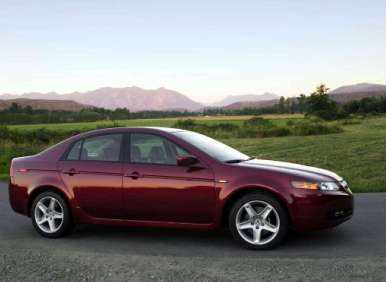
The Acura division of Honda Motor Company was the first Asian attempt to market upscale cars in the United States. While Lexus and Infiniti may garner the lion’s share of publicity these days, when it comes to Japanese luxury cars, the fact remains Acura was first.
March 1986 saw the introduction of the Acura Legend and the Acura Integra. Six years later, in 1992, a midsize Acura was added to the lineup. Called the Vigor, this was the car that would eventually evolve into the subject of this retrospective; the Acura TL. The first Acura product to actually wear a TL badge was introduced in 1995 as the 1996 Acura 2.5 TL and 3.2 TL (3.2 TL = 3.2-liter Touring Luxury car).
The TL was the first Acura product to step away from the original Acura model names in favor of an alphanumeric nomenclature. Eventually, Acura dropped references to engine displacement in its model naming schemes as well. With that change, the model became known as simply the Acura TL.
Over the four generations the model has been offered to date, the TL has been among Acura’s best selling models. The TL has also been one of the best selling luxury sedans in the United States, generally second in sales only to BMW’s 3 Series.
While the Acura TL goes back to 1996, this guide focuses on the second-generation cars forward, models built between 1999 and 2012.
Acura TL Used Car Buyer’s Guide: 1999 – 2003
The second generation Acura TL came with but one engine choice, a 225hp, 3.2L V6 with variable valve timing. The engine was capable of generating 216 foot-pounds of torque. Power was routed to the front wheels by way of a four-speed automatic transmission. Built in Marysville, Ohio, the 1999 Acura 3.2TL was a rather comprehensively equipped proposition. Only two options were available; a CD changer and a navigation system.
The second-generation models provide more headroom, shoulder and hip room than their predecessor, however legroom was decreased by an inch as the new car had a shorter wheelbase than the 1998 model. Happily it was lighter too, by some 60 pounds.
Reviewers of the time praised the TL’s combination of performance, luxury features an interior space—and the fact it was available at a price considerably less than its competitors in the class. In addition to strong performance from the engine, the Acura came loaded with over 100 standard features.
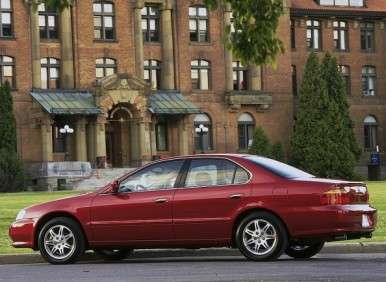
Acura TL Used Car Buyer’s Guide: 1999
The 1999 Acura TL was offered in but one state of trim, 3.2 TL. As a midsize luxury car, the Acura was very well equipped, with but, as we mentioned earlier, two options (a CD changer and a CD-based navigation system).
That said, the standard feature-set of the 1999 Acura 3.2 TL was comprised of; 16-inch alloy wheels, an integrated front air dam, bucket seats, a center console, fog lights, an integrated garage door opener, and heated front seats.
The model also used a keyless entry system, heated power adjustable exterior mirrors, power brakes, a power moonroof, a rear window defroster, and tinted glass. There was a tachometer, traction control, ABS for all four disc brakes, driver and front passenger airbags, an antitheft alarm system, leather upholstery, and power adjustable driver and front passenger seats. The Acura’s leather wrapped tilt steering wheel housed audio controls and controlled a power steering rack. Cruise control was also fitted to the TL.
Additionally, the 1999 Acura 3.2 TL had a remote trunk release, leather shift knob trim, automatic climate control, intermittent windshield wipers, power windows, power door locks, and an auto dimming rearview mirror. The audio system was comprised of a 180W Bose amplifier and Bose speakers, fed by an AM/FM/cassette/CD head unit.
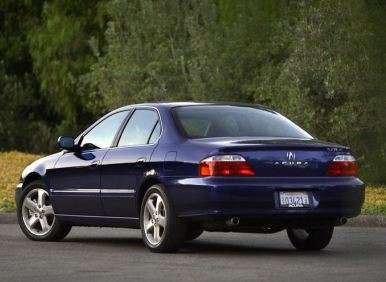
Acura TL Used Car Buyer’s Guide: 2000
The Acura’s four-speed automatic transmission was replaced by a five-speed sequential sport shift automatic transmission. The navigation system was changed from a CD database to a DVD database, enabling the entire United States road system to be contained on one disc. Side airbags were added to the TL, as well as a dual stage front passenger airbag.
Floor mats and an emergency trunk release were added to the list of standard features.
A model refresh brought a new look to the TL's front end and taillights. Additionally, an in-dash six-disc CD changer, a one-touch driver’s window, and a 10-position memory system for the driver’s seat and mirrors were added to the TL as standard equipment.
Further, a second trim level was added to the TL lineup for model year 2002. As its nomenclature implies, the 2002 Acura TL Type-S, was more performance oriented.
Standard equipment for this model included everything the base 3.2 TL came with plus; 17-inch alloy wheels, a 260hp version of the 3.2L V6, and a sport suspension system.
OnStar was added to TL models equipped with the navigation system.
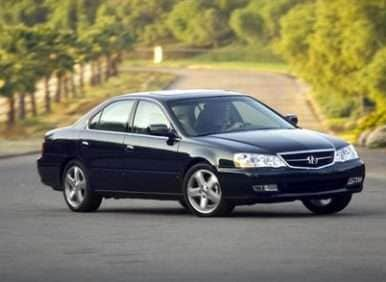
Acura TL Used Car Buyer’s Guide: 2004 – 2008
The third generation Acura TL was launched in 2003 as a 2004 model.
The numeric part of its alphanumeric nomenclature was dropped, leaving the model known simply as the Acura TL. Power for the third generation Acura TL came from a revised version of the 3.2L V6 tuned to produce 270hp and 238 foot-pounds of torque. Two transmissions were offered, a five-speed automatic and a six-speed manual.
One of the highlights of this version of the TL was the inclusion of the first high definition surround audio system application to an automobile. The Acura ELS (named for Grammy-award winning audio engineer Eliot Scheiner) audio system was made by Panasonic, and tuned by the noted audio engineer and record producer. In addition to standard CDs, the system will play DVD-audio discs, DTS audio discs, CD-Audio, CD-Rs and CD-RWs—but not MP3s.
Bluetooth made its Acura TL debut in this generation of the car as well. Further, the new TL’s navigation system accepted voice commands and was monitored through an eight-inch screen in the dash. Satellite radio also debuted in the mid-size Acura.
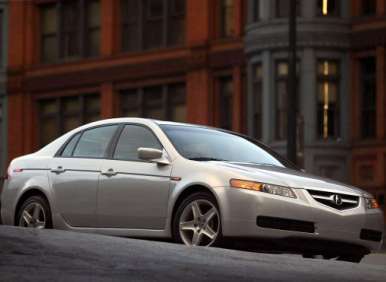
Acura TL Used Car Buyer’s Guide: 2004
Standard equipment for the 2004 Acura TL 3.2 sedan included; 17-inch alloy wheels, variable intermittent windshield wipers, a rear window defogger, a power glass sunroof, height adjustable heated power seats for the driver and front passenger, power adjustable lumbar support for the driver, leather upholstery, and bucket front seats.
The model also offered a folding rear seat with storage and a pass-through center armrest, rear ventilation ducts, remote power door locks, reverse tilting dual heated power exterior mirrors, one touch power windows, and remote window operation.
Cruise control, a cargo net, a front console with storage, front and rear cup holders, front door pockets, front seat back storage, an overhead console with storage, and a remote trunk release were all included in the base price. The 2004 Acura TL also retained accessory power when its engine was shut off. The power steering system was speed proportional and used a leather wrapped tilt and telescopic steering wheel with audio and cruise controls. The Acura’s integrated universal remote transmitter would open garage doors and security gates.
An interior air filtration system was integrated into the dual zone climate control system, there was a trunk light, leather trim on the doors and shift knob, front and rear reading lights, front and rear floor mats, an electrochromatic inside rearview mirror, and dual illuminating vanity mirrors in the sun visors for the driver and front passenger.
The 2004 TL’s memory system, in addition to steering wheel and seat position, would store climate control settings for two drivers. The model also featured a clock, a tachometer, a trip computer, an external temperature display, and a low fuel level warning indicator.
The eight-speaker audio system, as we discussed earlier, was comprised of a 225W surround amplifier and a subwoofer with an AM/FM in-dash six-disc CD player stereo head unit—capable of receiving XM satellite radio. The TL was pre-wired for a cellular phone, and featured a Bluetooth wireless data link for hands-free telephony.
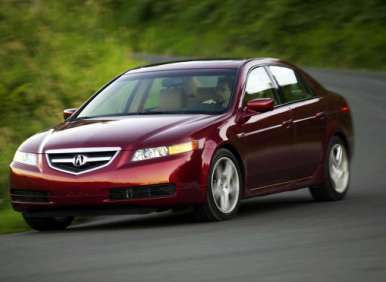
Acura TL Used Car Buyer’s Guide: 2005
A passenger airbag deactivation switch was installed, the seatbelt anchor mounds were repositioned, and the front seats got additional stitching.
Tire pressure monitoring was added, and the engine computer was tweaked to reduce torque steer. The SAE revised testing procedures dropped the TL's horsepower rating to 258 from 270. Actual engine output did not change.
The Acura TL Type-S returned for model year 2007, this time with a 286 hp 3.5L version of Acura’s single overhead cam 32-valve VTEC equipped V6. Differentiating the model was a unique front fascia, a set of quad tailpipes, Type-S specific 17-inch wheels, Brembo brakes, and paddle shifters for the five-speed automatic transmission. A six-speed manual transmission was offered for the Type-S as well.
Other features of the 2007 Acura TL Type-S included a sport-tuned suspension system and high-performance low-profile tires. Navigation was standard equipment, aluminum and fake carbon fiber was used to enhance the cabin, instead of the fake wood found in the basic TL. Sport seats offered more lateral support, and the Type-S LED-illuminated instrumentation glowed red and blue. Also, its pedal-set was finished in aluminum.
Outside, the Type-S was distinguished by its aerodynamic front fascia’s deeper front airdam. Additionally, the Type-S’s lower side skirts were more pronounced than the regular TL’s. The Type-S also featured a tail spoiler mounted on the trunk and LED taillights. Rather than chrome, all the brightwork on the TL was finished in dark matte.
The standard TL model got an exterior appearance update as well, in addition to an updated instrument panel and center stack. However, it lost its six-speed manual transmission.
The Acura TL models went into 2008 with an improved engine immobilizer system, a dedicated tire pressure monitoring system warning lamp, and the navigation system was updated to work in Hawaii.
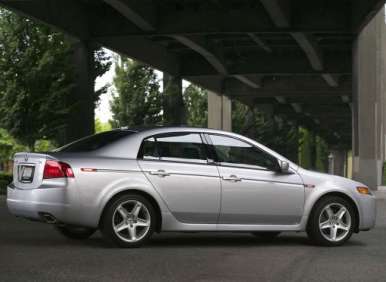
Acura TL Used Car Buyer’s Guide: 2009 – Current Model (2012)
Longer, taller and wider; the fourth-generation TL was both more spacious than its predecessor and introduced all wheel drive to the midsize Acura. Two engines were offered. The base model fourth generation TL was powered by a 3.5L V6 producing 280 hp and 254 foot-pounds of torque. The 2009 all-wheel drive Acura TL SH–AWD, used a 3.7L V6, which produced 306hp and 275 foot-pounds of torque.
The SH-AWD acronym stood for super handling all-wheel drive. Capable of transferring the engine's output to any of the wheels independently to maximize traction and grip, the super handling all-wheel-drive system would also allow the outside rear wheel to turn faster than the other wheels to help the TL corner more effectively.
Manual transmissions were laid to rest for 2009, with both TL models coming standard with a five-speed automatic transmission and steering wheel mounted paddle shifters.
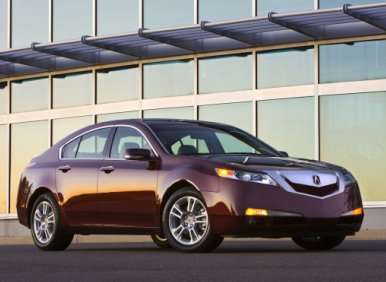
Acura TL Used Car Buyer’s Guide: 2009
Standard equipment on the base 2009 Acura TL included; 17-inch alloy wheels, all season tires, variable intermittent windshield wipers, a rear defogger, a power glass sunroof with remote operation, and cargo tiedowns. The height adjustable driver and front passenger seats were power operated and heated. The lumbar support in the driver of her flowers or seat was also power adjustable. All seats were upholstered in leather and the rear seat would fold for storage, in addition to featuring a pass-through center armrest.
The 2009 TL used remote power door locks; power operated heated reverse tilt exterior mirrors with turn signal repeaters, remote power window operation, and two one-touch power windows—one for the driver and one for the front passenger. Also on the standard equipment list was cruise control, a cargo net, a front console with storage, front and rear cup holders, an overhead console with storage, and a remote trunk release. The TL retained accessory power when the engine was shut off, and its electric speed proportional power steering system used a leather wrapped tilt and telescopic steering wheel. The steering wheel also housed transmission shift paddles, along with audio and cruise control switches.
The Acura’s universal remote transmitter would open garage doors and security gates, and its dual zone climate control system featured interior air filtration as well as ducts for the rear passengers. There was a trunk light, leather and wood trim on the center console, simulated alloy trim on the dash and doors, and leather trim on the shift knob.
Front and rear floor mats were included in the base price as was an electrochromatic inside rearview mirror and dual illuminating vanity mirrors for the driver and front passenger in the sun visors. The Acura’s memory settings covered seat position, mirror position, audio system settings and climate control system settings for two drivers. There was also a clock, a tachometer, a trip computer, an external temperature display, a low fuel level warning indicator, and a compass.
The eight-speaker audio system employed a 276W amplifier and a subwoofer. Its head unit was an AM/FM/in-dash six-disc CD player with CD MP3 playback capability and XM satellite radio. The unit also featured a USB port, the radio data system, speed sensitive volume control, an auxiliary audio device input, and full iPod/iPhone integration. The TL was pre-wired for a cellular phone, and featured a Bluetooth wireless data link for hands-free telephony. Navigation was optional.
Safety and security features included ABS for all four disc brakes, electronic brake force distribution, emergency braking assist, stability control, traction control, front and rear head airbags, dual front side mounted airbags, a set of child seat anchors, a remote anti-theft alarm system, and rear door child safety locks.
Also included were daytime running lights, fog lights, Xenon high-intensity discharge headlamps, turn signals in the mirrors, and tire pressure monitoring. There was an emergency interior trunk release, a rear center three-point safety belt, and front seatbelt pre-tensioners.
The TL SH-AWD had all of the above plus; the more powerful engine, 18-inch alloy wheels, upgraded brakes, more aggressively bolstered front seats, upgraded metallic trim and upgraded leather upholstery with contrasting stitching.
The Technology Package, offered for both trims, incorporated a hard-drive-based navigation system with voice recognition, real-time traffic updates, real-time weather forecast information, a GPS-linked and solar-sensing adaptive climate control system, keyless entry and start, a tail spoiler, a rearview camera and the 10-speaker Panasonic/ELS surround-sound system with DVD audio and 12.7 GB of digital music storage.
For those after better handling, all 2009 TLs could be equipped with more aggressive performance-oriented tires, and the TL SH-AWD offered a 19-inch wheel option.
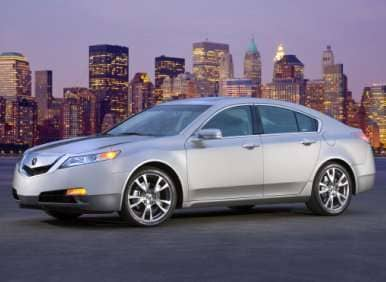
Acura TL Used Car Buyer’s Guide: 2010
The six-speed manual transmission returned to the offerings list, but only for SH-AWD models equipped with the Technology package.
The TL models went into 2011 unchanged.
For the 2012 refresh, Acura toned down the TL’s front-end grille treatment as it had received considerable derision. The new rear end treatment softened the look of the car further. A new six-speed automatic transmission was fitted with downshift rev-matching in addition to the ability to downshift two gears at a time. The navigation system was upgraded with a 60-gig hard drive, as well as a broader collection of maps and crisper graphics. Additional new features for the 2012 Acura TL included ventilated seats, a blind-spot warning information system, and upgraded wheels.
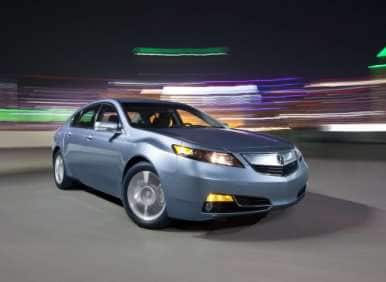
Acura TL Used Car Buyer’s Guide: Summary
Handsome and generously equipped, the Acura TL is a very desirable car. Further, the model has always been outfitted with a reasonably powerful engine and great handling. In addition to all of the Acura’s other attributes it’s enjoyable to drive.
There are some things to watch out for when considering a pre-owned one though. Models built between 1999 and 2003 have been known to have considerable trouble with their transmissions. Acura is aware of this and replaced many of them under warranty, even going so far as to extend the warranty to seven years or 70,000 miles.
Unfortunately the fix that was put in place for the transmissions often failed too. Units repaired or replaced before March 2005 were prone to repeat failures. A vehicle history report might catch it, but the best way to be sure you have the right transmission is to have a trusted professional independent Acura mechanic inspect the car.
